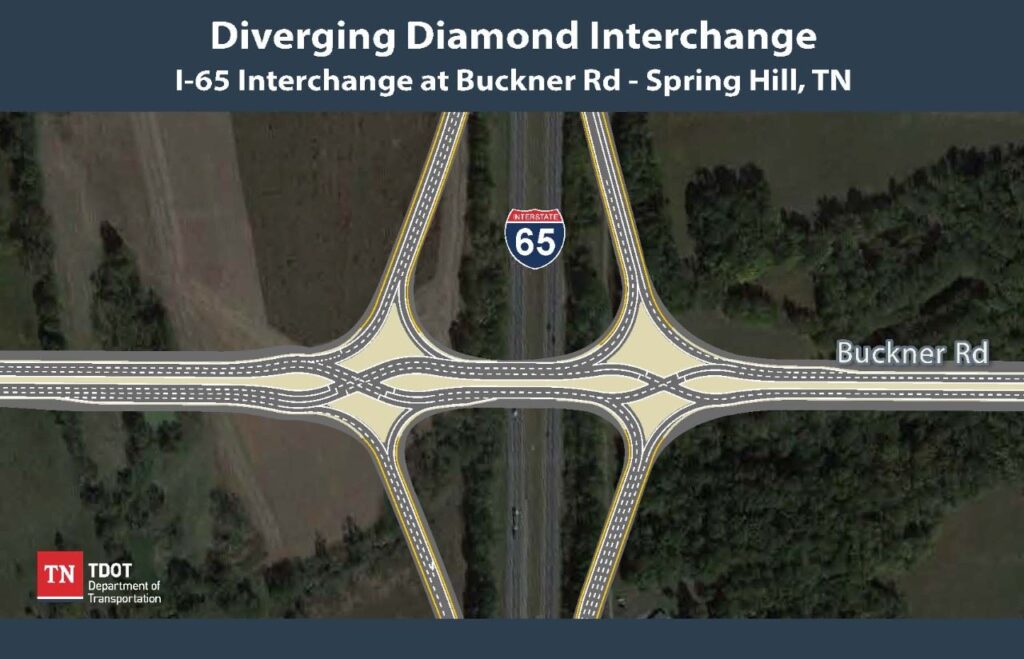Exploring the Innovation: The Diverging Diamond Intersection
In the world of modern transportation engineering, the diverging diamond intersection (DDI) stands out as a revolutionary design aimed at improving traffic flow, enhancing safety, and optimizing space utilization. Originally conceptualized in the 1970s and gaining popularity in recent decades, DDIs have become a hallmark of innovative infrastructure solutions in urban and suburban areas alike.

What is a Diverging Diamond Intersection?
At first glance, a diverging diamond intersection may seem complex, but its design is elegantly simple yet effective. Unlike traditional intersections where traffic crosses paths at multiple points, a DDI reconfigures these movements to reduce conflict points and streamline traffic flow. Key features include:
- Two Phases of Traffic Movement: Vehicles on the major road are temporarily redirected to the opposite side of the road at signalized junctions, allowing for unimpeded left turns onto the highway or freeway ramps.
- Enhanced Safety Measures: By eliminating left-hand turns across oncoming traffic, DDIs reduce the likelihood of collisions and improve overall safety for motorists, pedestrians, and cyclists.
- Efficient Use of Space: DDIs often require a smaller footprint compared to traditional interchanges, making them cost-effective and suitable for congested urban environments where space is limited.
How Does a Diverging Diamond Work?
- Entering the Intersection: As drivers approach the diverging diamond, they are guided to the left side of the road via clear signage and lane markings.
- Crossing Over: Once on the opposite side, drivers can access freeway ramps or make left turns without crossing paths with oncoming traffic, thanks to signalized intersections.
- Exiting the Intersection: After crossing through the diamond, drivers are guided back to the right side of the road, seamlessly merging back into the flow of traffic.
Benefits of Diverging Diamond Intersections
- Improved Traffic Flow: By reducing congestion and delays, DDIs enhance traffic efficiency and reduce travel times for commuters.
- Cost-Effectiveness: DDIs often require less land acquisition and construction costs compared to traditional interchange designs, making them a preferred choice for transportation planners.
- Enhanced Pedestrian Safety: Pedestrians benefit from shorter crossing distances and dedicated signalized crossings, improving overall safety at intersections.
Real-World Applications
DDIs have been successfully implemented in various cities across the United States and around the world, earning praise for their innovative approach to traffic management. Examples include:
- Spring Hill, Tennessee: The recently completed Diverging Diamond at June Lake Exit on Interstate 65, part of the DB2001 Buckner Extension project, serves as a local example of how DDIs can alleviate traffic congestion and support community growth.
- Other Major Cities: DDIs can also be found in major metropolitan areas like Atlanta, Georgia, and Salt Lake City, Utah, where they have significantly improved traffic flow and safety.
Conclusion
In conclusion, the diverging diamond intersection represents a forward-thinking solution to modern transportation challenges. With its emphasis on safety, efficiency, and space utilization, DDIs continue to shape the future of urban and suburban infrastructure, offering a blueprint for sustainable development and improved quality of life for communities worldwide.
